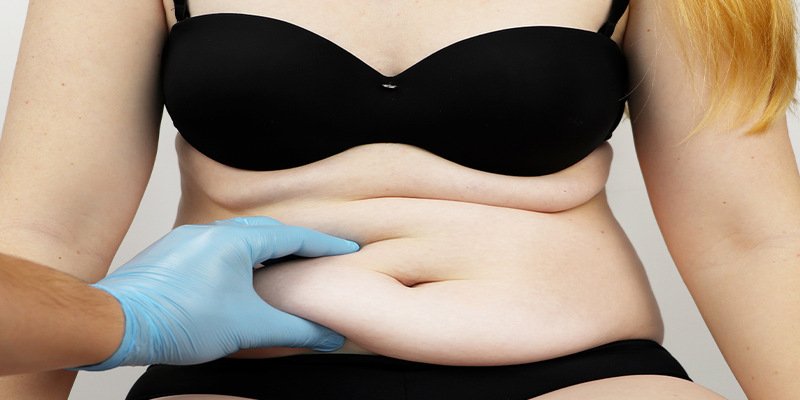Under-eye bags and dark circles are common cosmetic concerns that many people face. Despite their prevalence, the causes behind them can be multifaceted and complex. Understanding the science behind these issues can shed light on effective treatments and preventative measures. In this article, we delve into the biological mechanisms that contribute to under-eye bags and dark circles, as well as explore evidence-based remedies to address them.
The Physiology of Under-Eye Bags and Dark Circles:
The delicate skin around the eyes is particularly susceptible to changes in fluid balance and blood circulation. Under-eye bags often develop due to the accumulation of fluid (edema) in the tissues beneath the eyes. This can be caused by several factors:
1. Genetics:
Genetic predispositions play a significant role in the development of under-eye bags and dark circles. Studies have shown that certain genetic factors influence the structure and composition of the skin, including collagen and elastin production, which can impact the skin's resilience and elasticity. Additionally, variations in genes related to fluid balance and lymphatic drainage may contribute to the formation of under-eye puffiness.
2. Aging:
The aging process affects various aspects of skin health, including under-eye appearance. As individuals age, the skin undergoes intrinsic changes such as decreased collagen and elastin production, leading to loss of skin firmness and elasticity. Moreover, the fat pads surrounding the eyes may become displaced or atrophy over time, resulting in a sunken or hollowed appearance that accentuates the visibility of dark circles.
3. Fluid Retention:
Several lifestyle factors can contribute to fluid retention and exacerbate under-eye puffiness. High sodium intake, commonly found in processed foods, can lead to water retention throughout the body, including the delicate tissues beneath the eyes. Additionally, inadequate hydration, excessive alcohol consumption, and hormonal fluctuations, particularly during menstruation or pregnancy, may contribute to fluid accumulation and puffiness.
Dark circles, on the other hand, are often caused by hyperpigmentation or increased visibility of blood vessels beneath the thin skin. Common factors that contribute to dark circles include:
- Thin Skin: The skin around the eyes is thinner than the skin on other parts of the body, making underlying blood vessels more visible. This can give rise to a bluish or purplish tint, especially in individuals with fair or translucent skin.
- Lifestyle Factors: Poor sleep quality, chronic stress, smoking, and dietary habits can exacerbate dark circles by impairing circulation and exacerbating inflammation.
Causes:

While the above factors are known to impact the appearance of under-eye bags and dark circles, other less apparent causes may be at play. These include:
1. Allergies:
Environmental allergens can trigger an inflammatory response in the body that leads to fluid retention and puffiness around the eyes. Seasonal allergies, in particular, are known to cause under-eye swelling and dark circles due to increased histamine release.
2. Sun Exposure:
Excessive sun exposure can damage the skin's integrity, leading to collagen breakdown and reduced elasticity. This can result in sagging skin and under-eye bags that may worsen over time without proper sun protection.
3. Sleep Deprivation:
Lack of sleep can contribute to fluid accumulation and dark circles by disrupting lymphatic drainage and blood circulation. Sleep deprivation can lead to increased inflammation in the body, which may worsen under-eye puffiness.
Effective Treatments and Preventative Measures:
Fortunately, there are several strategies and treatments available to reduce the appearance of under-eye bags and dark circles:
- Topical Treatments: Over-the-counter creams and serums containing ingredients such as retinol, vitamin C, caffeine, hyaluronic acid, and peptides can help improve skin texture, reduce puffiness, and lighten dark circles.
- Lifestyle Modifications: Getting an adequate amount of sleep, maintaining a balanced diet low in sodium, staying hydrated, and managing stress can help minimize fluid retention and improve skin health.
- Cosmetic Procedures: In cases where under-eye bags or dark circles are more pronounced, cosmetic interventions such as injectable fillers, laser therapy, chemical peels, or surgical procedures like blepharoplasty may be considered for more dramatic results.
Exploring Treatment Options:

There are additional treatment options worth exploring for those seeking further improvement:
- Microneedling: This process stimulates the body's natural healing response, leading to increased collagen production and skin renewal. Microneedling can improve skin texture, reduce pigmentation irregularities, and enhance the efficacy of topical skincare products when used in conjunction with them.
- Eye Creams with Specific Ingredients: Certain eye creams may contain specialized ingredients targeted at specific concerns. For example, peptides such as palmitoyl tetrapeptide-7 and palmitoyl oligopeptide can help improve skin firmness and reduce the appearance of fine lines. Niacinamide (vitamin B3) has been shown to have brightening effects and can help minimize the appearance of dark circles.
- Home Remedies and Natural Treatments: Some individuals may prefer natural or DIY remedies to address under-eye concerns. Ingredients such as aloe vera gel, green tea extract, and almond oil are believed to have soothing and anti-inflammatory properties that can help reduce puffiness and dark circles. However, it's essential to exercise caution and perform a patch test before applying any new ingredients to the delicate skin around the eyes.
- Combination Therapy: Combining multiple treatment modalities can often yield synergistic results and enhance the overall outcome. For example, combining topical treatments with in-office procedures like laser therapy or microneedling may lead to more significant improvements in skin texture, tone, and pigmentation.
Conclusion:
Under-eye bags and dark circles are common cosmetic concerns that can affect individuals of all ages. While their underlying causes may vary, understanding the biological mechanisms behind these issues is crucial for effective treatment and prevention. By adopting a holistic approach that addresses lifestyle factors, utilizes appropriate skincare products, and considers medical interventions when necessary, individuals can achieve a refreshed and rejuvenated appearance around the eyes. Remember to consult with a dermatologist or healthcare professional for personalized recommendations tailored to your specific needs.







